Themed collection Synchrotron radiation and neutrons in art and archaeology

Synchrotron radiation and neutrons in art and archaeology 2014
Loïc Bertrand, Philippe Dillmann and Ina Reiche introduce the Synchrotron radiation and neutrons in art and archaeology 2014 themed issue, and give an overview of the conference held in the Louvre Museum, Paris.
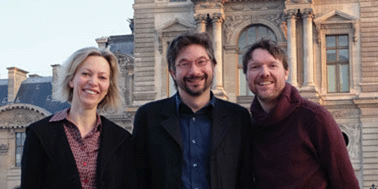
J. Anal. At. Spectrom., 2015,30, 540-541
https://doi.org/10.1039/C5JA90006A
Micro-XANES study on Mn browning: use of quantitative valence state maps
For the first time quantitative Mn valence state maps were obtained, by conversion of ratio maps IMn(E1)/IMn(E2) using a calibration curve, and were used in the evaluation of reducing treatments on historical glass suffering from Mn browning.
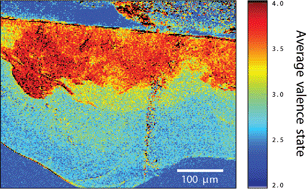
J. Anal. At. Spectrom., 2015,30, 642-650
https://doi.org/10.1039/C4JA00386A
Tracking the transformation and transport of arsenic sulfide pigments in paints: synchrotron-based X-ray micro-analyses
Realgar and orpiment, arsenic sulfide pigments used in historic paints, degrade under the influence of light, resulting in transparent, whitish, friable and/or crumbling paints.

J. Anal. At. Spectrom., 2015,30, 813-827
https://doi.org/10.1039/C4JA00424H
Strategies for processing mega-pixel X-ray fluorescence hyperspectral data: a case study on a version of Caravaggio's painting Supper at Emmaus
Approaches for the identification of minor components in complex XRF datasets and software packages for their processing are assessed.
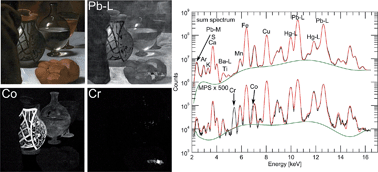
J. Anal. At. Spectrom., 2015,30, 777-789
https://doi.org/10.1039/C4JA00387J
An integrated approach based on micro-mapping analytical techniques for the detection of impurities in historical Zn-based white pigments
We propose a combination of elemental and molecular μ-mapping techniques for the detection of trace metal ions and molecules in historical samples of Zn-based white pigments.
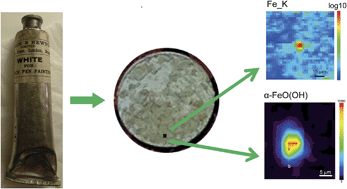
J. Anal. At. Spectrom., 2015,30, 828-838
https://doi.org/10.1039/C4JA00385C
Challenging wax-cast figurine serial production unravelled by multi-analytical techniques
Eight complementary techniques were successfully applied to study a pair of very alike Baroque colored wax figurines.
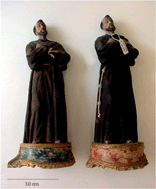
J. Anal. At. Spectrom., 2015,30, 790-812
https://doi.org/10.1039/C4JA00415A
The use of XRPD for the investigation of historic pigments and painting materials in works by Henryk Siemiradzki
XRPD was applied to resolve many confusing results obtained by XRF, SEM/EDX, or other techniques in the investigations of Siemiradzki's works from the National Museum in Krakow (Poland).
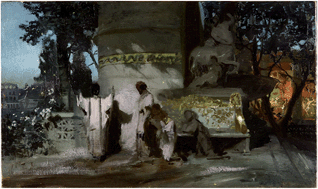
J. Anal. At. Spectrom., 2015,30, 751-758
https://doi.org/10.1039/C4JA00341A
Palaeolithic paint palettes used at La Garma Cave (Cantabria, Spain) investigated by means of combined in situ and synchrotron X-ray analytical methods
This rock art study of La Garma provides new and original insights into the characterisation of the prehistoric paint palette.
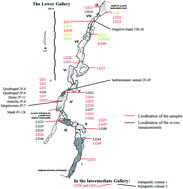
J. Anal. At. Spectrom., 2015,30, 767-776
https://doi.org/10.1039/C4JA00396A
Mapping iron gall ink penetration within paper fibres using scanning transmission X-ray microscopy
STXM makes it possible to map the distribution of an iron gall ink on a paper fibre cross-section.
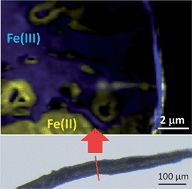
J. Anal. At. Spectrom., 2015,30, 635-641
https://doi.org/10.1039/C4JA00358F
The mapping and differentiation of biological and environmental elemental signatures in the fossil remains of a 50 million year old bird
Synchrotron analysis of a 50 million year old bird from the Green River Formation (USA) reveals the chemistry of preservation.

J. Anal. At. Spectrom., 2015,30, 627-634
https://doi.org/10.1039/C4JA00395K
Application of a spoked channel array to confocal X-ray fluorescence imaging and X-ray absorption spectroscopy of medieval stained glass
Confocal XFI and XAS using a spoked channel array reveal elemental distribution and speciation in 3D space with improved spatial resolution and energy-independent probing volume.
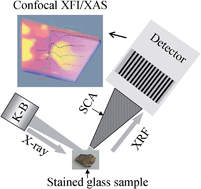
J. Anal. At. Spectrom., 2015,30, 759-766
https://doi.org/10.1039/C4JA00389F
Compositional analysis of a historical collection of Cisalpine Gaul's coins kept at the Hungarian National Museum
This work, through PGAA and XRF measurements, enabled the detection of silver debasement and alloy changes in pre-Roman age coins.
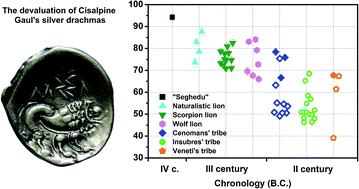
J. Anal. At. Spectrom., 2015,30, 730-737
https://doi.org/10.1039/C4JA00398E
A comparative study of Hispano-Moorish and Italian Renaissance lustred majolicas by using X-ray absorption spectroscopy
Lustre is characterized by a few hundreds of nanometers thick heterogeneous metal-glassy nano-composite film.
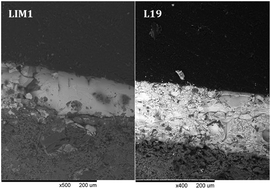
J. Anal. At. Spectrom., 2015,30, 738-744
https://doi.org/10.1039/C4JA00382A
Degradation mechanisms of reinforcing iron rebars in monuments: the role of multiscale porosity in the formation of corrosion products investigated by X-ray tomography
Laboratory and synchroton X-ray tomography highlights the role of multiscale porosity in the corrosion process of iron rebars from the Cathedral of Orléans.

J. Anal. At. Spectrom., 2015,30, 580-587
https://doi.org/10.1039/C4JA00388H
Mortar samples from the Abbey of Saint John at Müstair: a combined spatially resolved X-ray fluorescence and X-ray absorption (XANES) study
Three mortar samples from the Abbey of Saint John, in the Swiss village of Mustair have been investigated using synchrotron radiation based techniques (XRF and XANES).
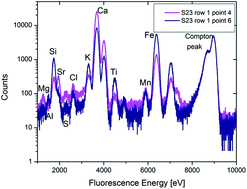
J. Anal. At. Spectrom., 2015,30, 702-706
https://doi.org/10.1039/C4JA00401A
Combined neutron and laser techniques for technological and compositional investigations of hollow bronze figurines
Neutron tomography (NT), time of flight neutron diffraction (TOF-ND) and laser induced plasma spectroscopy (LIPS) were combined in the archaeometallurgical study of hollow bronze figurines.
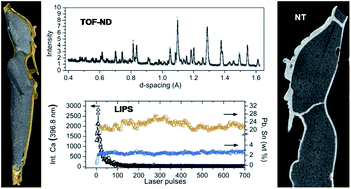
J. Anal. At. Spectrom., 2015,30, 713-720
https://doi.org/10.1039/C4JA00447G
In situ monitoring of corrosion processes by coupled micro-XRF/micro-XRD mapping to understand the degradation mechanisms of reinforcing bars in hydraulic binders from historic monuments
In situ analyses under synchrotron XRD have highlighted the corrosion processes of a rebar embedded in concrete in the presence of chloride.
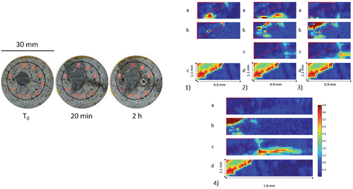
J. Anal. At. Spectrom., 2015,30, 721-729
https://doi.org/10.1039/C4JA00370E
In situ time-lapse synchrotron radiation X-ray diffraction of silver corrosion
In order to study the initial corrosion processes of silver in the presence of corrosive gases in situ time-lapse XRD experiments were performed. The data collected using a newly combined environmental cell/gas flow set up introduces a set of highly useful tools for scientists to study time-lapse gaseous corrosion at ambient temperature and pressure.
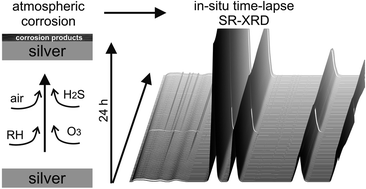
J. Anal. At. Spectrom., 2015,30, 694-701
https://doi.org/10.1039/C4JA00392F
Thermodynamic and experimental study of the degradation of the red pigment mercury sulfide
Combination of thermodynamic and experimental approaches to study the instability of red mercury sulfide and the formation and evolution of the different degradation compounds.
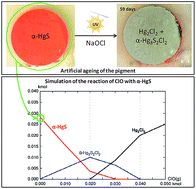
J. Anal. At. Spectrom., 2015,30, 599-612
https://doi.org/10.1039/C4JA00372A
Phase composition mapping of a 17th century Japanese helmet
Neutron Diffraction represents the ideal technique for the characterisation of the micro-structural properties of ancient metals, allowing retrieval of information on the smelting process, and the mechanical and thermal treatments applied during the manufacture of the sample.
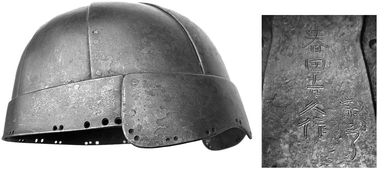
J. Anal. At. Spectrom., 2015,30, 707-712
https://doi.org/10.1039/C4JA00390J
Full spectral XANES imaging using the Maia detector array as a new tool for the study of the alteration process of chrome yellow pigments in paintings by Vincent van Gogh
FS-XANES imaging using the Maia detector is proposed for studying chrome yellows alteration in Van Gogh artworks.
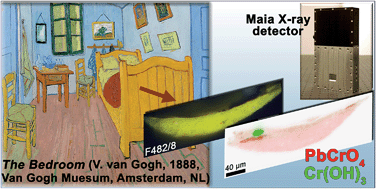
J. Anal. At. Spectrom., 2015,30, 613-626
https://doi.org/10.1039/C4JA00419A
Neutron resonance transmission imaging for 3D elemental mapping at the ISIS spallation neutron source
NRTI: a new non-destructive neutron-based technique for the image reconstruction of the bulk elemental composition.
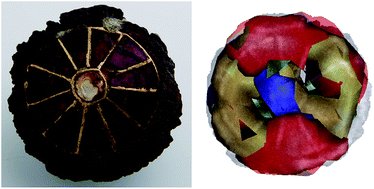
J. Anal. At. Spectrom., 2015,30, 745-750
https://doi.org/10.1039/C4JA00384E
Non-destructive analyses of bronze artefacts from Bronze Age Hungary using neutron-based methods
Our paper produces results on production techniques of prehistoric metal artefacts using non-destructive neutron-based methods, considering aspects of heritage protection.
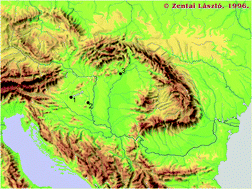
J. Anal. At. Spectrom., 2015,30, 685-693
https://doi.org/10.1039/C4JA00377B
Evidence for an unorthodox firing sequence employed by the Berlin Painter: deciphering ancient ceramic firing conditions through high-resolution material characterization and replication
The firing conditions used to produce an Athenian vessel in the 5th century B.C. were determined by XANES spectroscopy.
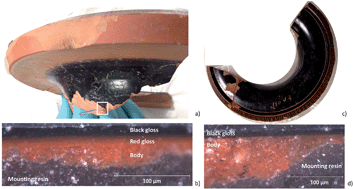
J. Anal. At. Spectrom., 2015,30, 666-676
https://doi.org/10.1039/C4JA00376D
“De Colorando Auro” medieval colour surface treatment of silver gilded statuettes decorating the Holy Lady Shrine of Huy (13th century, Belgium)
Medieval chemical coloration revealed by XANES measurements on the silver gilded statuettes from the Holy Lady Shrine, 13th century. It is from the Holy Lady collegiate church in Huy, Belgium.

J. Anal. At. Spectrom., 2015,30, 677-684
https://doi.org/10.1039/C4JA00340C
Evolution of terra sigillata technology from Italy to Gaul through a multi-technique approach
Synchrotron investigation on sigillata to accurately assess the size and distribution of different mineral phases contained in the slip.

J. Anal. At. Spectrom., 2015,30, 658-665
https://doi.org/10.1039/C4JA00367E
Morphology and characterization of Dematiaceous fungi on a cellulose paper substrate using synchrotron X-ray microtomography, scanning electron microscopy and confocal laser scanning microscopy in the context of cultural heritage
Dematiaceous (black pigmented) fungi interact with a cellular paper matrix growing on the surface and in paper bulk.
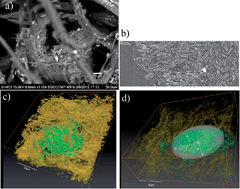
J. Anal. At. Spectrom., 2015,30, 651-657
https://doi.org/10.1039/C4JA00337C
Colour degradation of artworks: an ab initio approach to X-ray, electronic and optical spectroscopy analyses of vermilion photodarkening
First principles calculations explain the presence, colour, and photo-reactivity of Hg-containing compounds involved in vermilion degradation.

J. Anal. At. Spectrom., 2015,30, 588-598
https://doi.org/10.1039/C4JA00327F
About this collection
This collection of papers highlights the field of synchrotron radiation and neutrons in art and archaeology. Inspired by research presented at the recent SR2A conference at the Musee du Louvre, Paris. Guest Edited by Loïc Bertrand, Philippe Dillmann and Ina Reiche. New articles will be added to this collection as they are published.